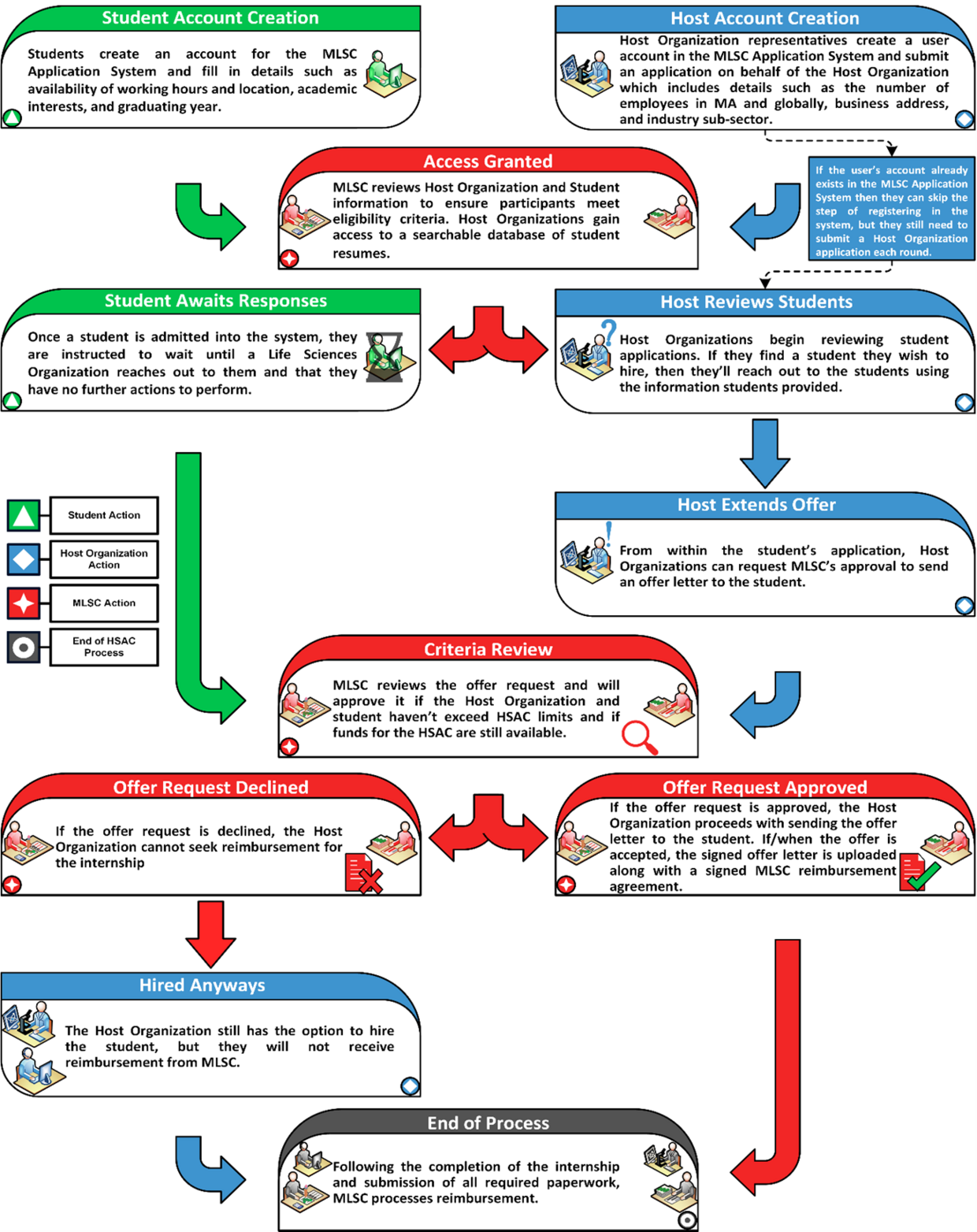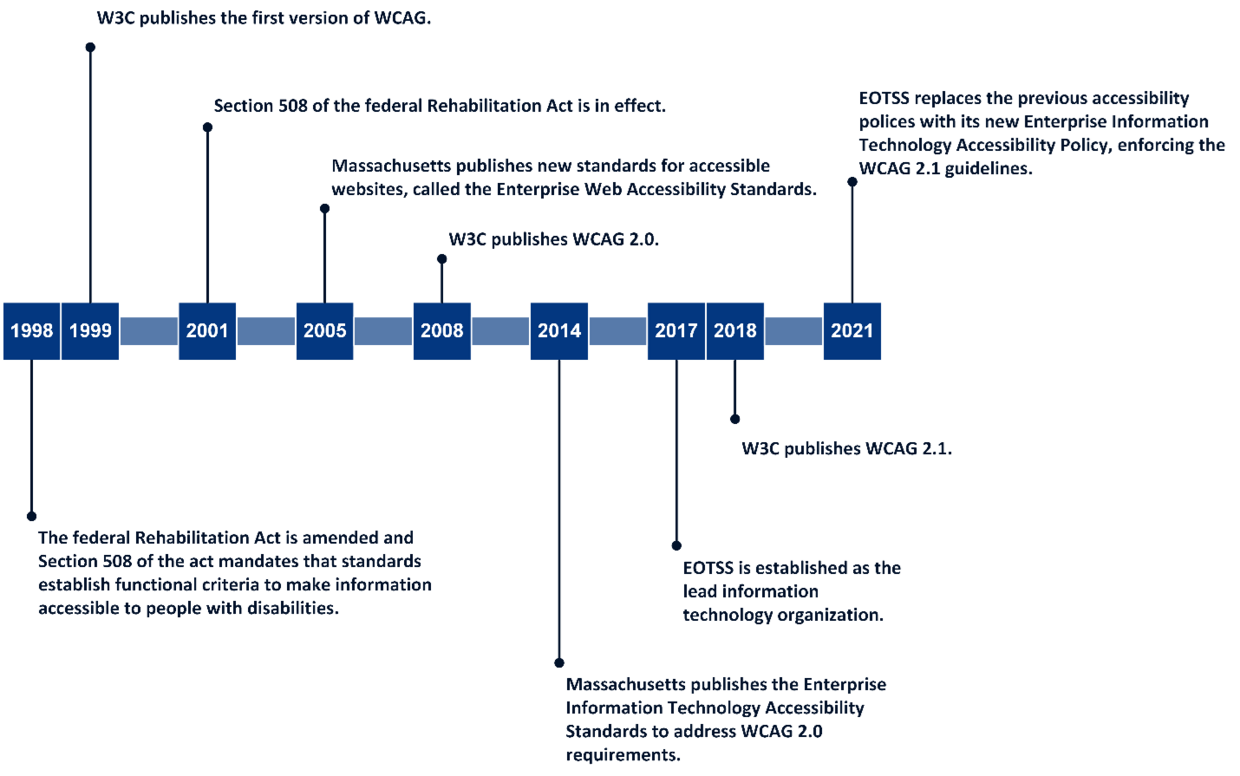Overview
The Massachusetts Life Sciences Center (MLSC) was established by Section 24 of Chapter 123 of the Acts of 2006 and codified in Section 3 of Chapter 23I of the Massachusetts General Laws as a public instrumentality.1 As per Section 3 of Chapter 23I of the General Laws, MLSC is placed in the Executive Office of Economic Development but is not subject to the supervision or control of said office, or of any board, bureau, department, or other center of the Commonwealth. Instead, MLSC is governed, and its corporate powers exercised, by a board of seven directors. One director each is appointed by the secretary of the Executive Office for Administration and Finance, the director of the Executive Office of Economic Development, and the president of the University of Massachusetts. The remaining four directors are appointed by the Governor. MLSC’s mission statement, found on its website, states,
The Massachusetts Life Sciences Center’s mission is to serve as the hub of the world’s life sciences ecosystem, encourage innovation through investments in good science and business, strengthen and protect Massachusetts’ global leadership position in the life sciences, accelerate the commercialization of promising treatments, therapies, and cures that will improve patient care, create jobs, drive economic development and [science, technology, engineering, and mathematics] workforce development.
Included within MLSC is the Massachusetts Life Sciences Investment Fund,2 which exists to finance MLSC’s activities. While MLSC was established in 2006, the center had no significant activity until 2008, when Chapter 130 of the Acts of 2008 (also known as the Life Sciences Act) was signed into law.
As of December 31, 2023, MLSC had 25 active employees. It is located at 1075 Main Street in Waltham.
| Year | 2008 | 2018 |
|---|---|---|
| Amount Granted in Bonds | $500,000,000 (one time) | $472,970,000 (one time) |
| Amount Granted to the Massachusetts Life Sciences Investment Fund | $250,000,000 ($25 million each year for 10 years) | No Appropriation |
| Amount Granted as Various Tax Incentives | $250,000,000 ($25 million each year for 10 years) | $150,000,000 ($30 million each year for 5 years) |
| Total | $1,000,000,000 | $622,970,000 |
Massachusetts Life Sciences Investment Fund
The Massachusetts Life Sciences Investment Fund, according to Section 6(c) of Chapter 23I of the General Laws, is to “be held and applied by [MLSC], subject to the approval of the board [of directors], to make qualified investments, grants, research and other funding and loans designed to advance the following public purposes for the life sciences in the commonwealth.” For the purposes of this audit, Clauses 5 and 9 of Section 6(c) of Chapter 23I of the General Laws are of particular note. Clause 5 states that the fund is to be applied for high school internships and other employment opportunities. The high school internship has the additional note, which states that “additional consideration shall be given to [students within marginalized populations] at schools where at least 80 per cent of the student population is eligible for free or reduced lunch.”3 Clause 9 states, “to otherwise further the public purposes set forth herein,” and additionally states, “[MLSC] shall file an annual report, not later than December 1, with the house and senate committees on ways and means detailing the following.”4 Section 6(c)(9) of Chapter 23I of the General Laws then lists eight requirements for the annual report. For more information, see the eight requirements here.
High School Apprenticeship Challenge Program Overview
The High School Apprenticeship Challenge (HSAC)5 is a program that MLSC offers, which started in 2016 and exists to help MLSC achieve Clause 5 of Section 6(c) of Chapter 23I of the General Laws.6 The program seeks to grant internships to students interested in the life science field at applicable host organizations7 and to, according to the program overview on MLSC’s website, give aid for “pre-internship lab training programs [at select] school districts which provide biotechnology/biomedical skill development.” For the HSAC program, host organizations are allowed to hire up to two interns per program year8 and are reimbursed up to a maximum amount MLSC sets.9 The maximum amount that MLSC reimburses host organizations has increased over the years. For the 2022 school year, MLSC reimbursed up to a maximum of $3,240 per intern, while as of the 2024 school year,10 MLSC reimburses up to a maximum of $4,080 per intern.
| Fiscal Year* | Expenses Incurred for the HSAC Program |
|---|---|
| 2021 | $279,355 |
| 2022 | $395,766 |
| 2023 | $516,127 |
* While fiscal year 2021 covered July 1, 2020 through June 30, 2021, the audit period started on July 1, 2021. Additionally, while fiscal year 2023 covered July 1, 2022 through June 30, 2023, the audit period ended on December 31, 2023.
During the audit period, in order to be enrolled in the HSAC program and be given consideration for an internship, students had to meet the requirements MLSC set. These requirements are meant to ensure that only underrepresented and low-income students are eligible for the HSAC program. For more information, see the eligibility requirements here.
HSAC Program Evolution and Outreach
Changes to the HSAC program requirements and functions arise from mutual conversations with MLSC stakeholders, primarily the host organizations that use the program. This often results in modifications, such as increasing the hourly pay rate for interns—to ensure that the internship is competitive—or expanding the student requirements—to allow more underrepresented and low-income populations to join the HSAC program. Before any changes to the HSAC program are enacted, suggested modifications are reviewed by the board of directors.
MLSC uses multiple outreach methods to notify people about the HSAC program and other programs MLSC offers. These methods include a weekly newsletter sent out on Mondays; an email campaign sent out to staff members at schools11 that have been part of previous MLSC programs; and attending science, technology, engineering, and mathematics conferences to spread the word verbally. MLSC also taps into its partnerships with the Executive Office of Education and the Massachusetts Department of Elementary and Secondary Education to help raise awareness about the program. MLSC also reaches out to the Massachusetts Association of Vocational Administrators when the HSAC program opens so that the association can include it in its newsletter(s).
“Additional Considerations” as Required by the General Laws
MLSC does not refer or recommend specific candidates for HSAC internships. Instead, MLSC acts as an intermediary and created the MLSC Application System as a platform on which students and host organizations can come together. Therefore, in order to comply with Clause 5 of Section 6(c) of Chapter 23I of the General Laws, which states that “additional consideration shall be given to [students within marginalized populations] at schools where at least 80 per cent of the student population is eligible for free or reduced lunch,” MLSC designed the HSAC program’s eligibility criteria to increase the number of students within marginalized populations in the pool of applicants. MLSC also established partnerships with several host organizations that historically have made intentional efforts to select students within marginalized populations to be part of their internship programs.12
MLSC Application System
The MLSC Application System is used by both college and high school students to apply for internships from host organizations. Both students and host organizations need to register with MLSC by creating an account. Students must provide some basic information about themselves in order to create their account, such as where they go to school, whether they are part of the Metropolitan Council for Educational Opportunity program,13 and contact information. Once their account is created, students need to upload a cover letter and a resume and answer questions about their academic interests and their job availability, such as where they would be willing to work or whether they will be full- or part-time. When students submit their application, they agree to a disclaimer that states that all the information they have submitted is accurate. Host organizations undergo a similar process and answer questions such as where their organizations are located or which life science subsector(s) their organizations focus on.
MLSC staff members review student and host organization applications. If a student’s application is accepted by MLSC staff members, then the student is added to MLSC’s database of potential interns. If a host organization’s application is accepted, then it can view the database of potential interns. Host organizations may then reach out to students found in the database. If both parties agree to work together, then the host organization adds the student to its list of interns it wishes to hire. Once a host organization has selected all the interns it wishes to hire, the organization changes the students’ application statuses to “extend offer,” which prompts MLSC to review the offer request(s). At this point, MLSC staff members give the profiles of the students a thorough review to ensure that they meet the requirements necessary for MLSC to reimburse the host organization for the wages of the intern(s). Additionally, MLSC reviews both student and host organization accounts to ensure that HSAC limits have not been exceeded.14 If a student is found to not meet the requirements during this review, then the host organization is informed that it will not be reimbursed should it choose to hire the ineligible student as an intern, but that it is still allowed to hire the student, should it wish.
When the student has been hired as an intern by the host organization, the organization then needs to sign an agreement with MLSC that sets the terms of the internship and reimbursement. In addition, it is expected for host organizations to upload both the intern’s signed offer letter and the signed agreement to the MLSC Application System. Once the internship is completed, MLSC processes the reimbursement for the host organization.
How the MLSC Application Process Works15
Annual Reports
As required by the General Laws, MLSC publishes an annual report, which provides an overview of MLSC’s activities, investments, and impact on Massachusetts’s life science sector. This annual report is shared with the House and Senate Committees on Ways and Means. Section 15 of Chapter 23I of the General Laws, added by Chapter 130 of the Acts of 2008, requires that the “center shall annually complete a detailed report setting forth its operations and accomplishments.”
Sections 616 and 15 of Chapter 23I of the General Laws were both active during the audit period, with each section requiring MLSC to file an annual report with the House and Senate Committees on Ways and Means.17 Section 6 gave MLSC a deadline to submit the annual report “not later than December 1,” while Section 15 gave MLSC a submittal deadline of “on or before October 1.” While this issue was solved after the audit period, during the audit period, there was a two-month timeframe when the annual report was required to be submitted both “on or before October 1” and “not later than December 1.” The Section 6 deadline of December 1 was used, as Section 6 gave exact requirements for the elements that the annual report needed to contain.
Website Accessibility
Americans with Disabilities Act
In 1990, the Americans with Disabilities Act, a comprehensive civil rights law prohibiting discrimination based on disability, came into effect. Title II of the Americans with Disabilities Act covers state-funded services and programs, including all activities of state and local governments, regardless of whether these entities receive federal financial assistance.18
Web Content Accessibility Guidelines
In 1999, the World Wide Web Consortium (W3C), an international organization overseeing internet standards, released the Web Content Accessibility Guidelines (WCAG) 1.0. These guidelines aimed to offer directions on enhancing the accessibility of web content for people with disabilities. In 2008, W3C published WCAG 2.0. In 2018, W3C published WCAG 2.1, which was built on WCAG 2.0 to improve web accessibility on mobile devices and to further improve web accessibility for people with visual impairments and cognitive disabilities.
Progression of Internet Accessibility Standards
How People with Disabilities Use the Web
According to W3C, people with disabilities use assistive technologies and adaptive strategies specific to their needs to navigate web content. Examples of assistive technologies include screen readers, which read webpages aloud for people who cannot read text; screen magnifiers for individuals with low vision; and voice recognition software for people who cannot (or do not) use a keyboard or mouse. Adaptive strategies refer to techniques that people with disabilities employ to enhance their web interaction.19 These strategies might involve increasing text size, adjusting mouse speed, or enabling captions. To make web content accessible to people with disabilities, developers must ensure that various components of web development and interaction work together. This includes text, images, and structural code; users’ browsers and media players; and various assistive technologies.
MLSC has made efforts to create an accessible website for the public. Before we started our audit, MLSC reviewed the contract it signed with its previous website vendor and found that the previous vendor’s contract excluded website accessibility as one of its obligations to MLSC. Because of this, MLSC informed us that it did not extend its contract with that vendor and instead brought on a new vendor that would help MLSC with its website accessibility. This new vendor meets with MLSC weekly to discuss MLSC’s website and improvements that could be made.
Common Accessibility Features of a Website20
| Date published: | June 12, 2025 |
|---|


